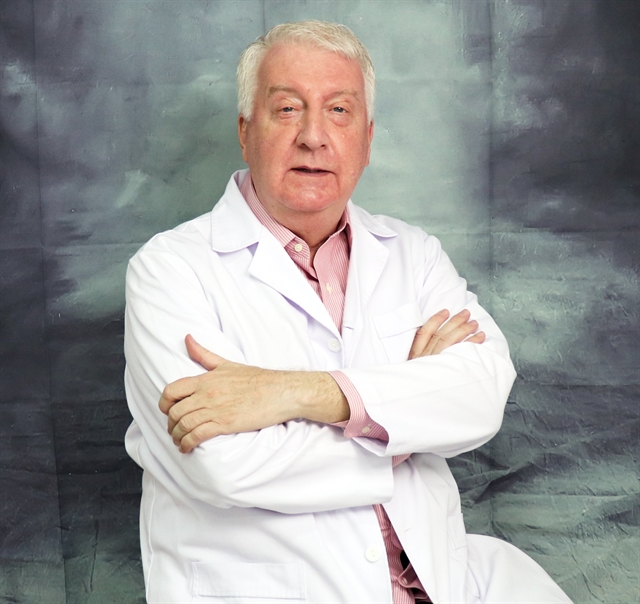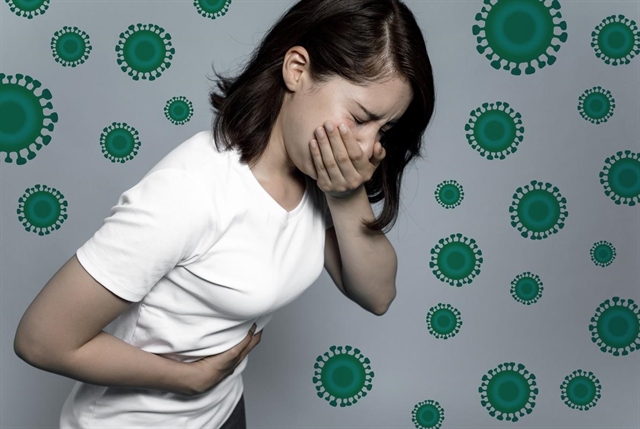 Life & Style
Life & Style


|
| Dr William Brian McNaull. Photo courtesy of Family Medical Practice |
Dr William Brian McNaull*
Are allergic reactions to food common in Việt Nam?
Food allergy affects an estimated six to eight per cent of children under age three, and about four per cent of adults worldwide. It’s easy to confuse a food allergy with a much more common reaction known as food intolerance. For expats living in Hà Nội, allergic reactions to local food, especially seafood, can present significant problems that may need to be addressed urgently.
An allergic reaction to a particular food may be uncomfortable but not severe for some people. For others, an allergic food reaction can be frightening and even life-threatening. Food allergy symptoms usually develop within a few minutes to an hour after eating the offending food.
The most common symptoms include; tingling in the mouth; hives, itching or eczema; swelling of the lips, face, tongue and throat, or other parts of the body; wheezing, nasal congestion or trouble breathing; abdominal pain, diarrhoea, nausea or vomiting; dizziness, lightheadedness or fainting.

|
| Food allergy affects an estimated six to eight per cent of children under age three, and about four per cent of adults worldwide. — Photo shutterstock.com |
Anaphylaxis
In some people, a food allergy can trigger life-threatening symptoms, including; a swollen throat or a lump that makes breathing difficult; shock, with a severe drop in blood pressure and a rapid pulse; dizziness; lightheadedness and/or loss of consciousness. Emergency treatment is critical for anaphylaxis. If untreated, it can result in a coma or death.
How do food allergies develop?
The principal cause of allergic reactions to food is an immune system mistakenly identifying a specific food substance as harmful. Immune cells release a substance known as immunoglobulin E (IgE) antibodies to fight the culprit food or food substance (the allergen). The next time one eats even the smallest amount of that food, the IgE antibodies sense it and signal to the immune system to release a chemical called histamine. This histamine released into the bloodstream causes the range of symptoms described.
The majority of food allergies are triggered by certain proteins in; shellfish, such as shrimp, lobster and crab; peanuts; tree nuts, such as walnuts and pecans; and fish and eggs.
What is the most effective treatment?
The only way to avoid an allergic reaction is to avoid the foods that cause the signs and symptoms. However, despite your best efforts, you may come into contact with a food that causes a reaction.
For a minor allergic reaction, prescribed antihistamines may help reduce symptoms. These drugs can be taken after exposure to an allergy-causing food to help relieve itching or hives. However, antihistamines alone can’t treat a severe allergic reaction.
For a severe allergic reaction, you may need an emergency epinephrine injection and a trip to the emergency room requiring IV fluids, anti-histamines, epinephrine and even steroids. Many people with known severe allergies carry an auto-injector pen for epinephrine (EpiPen).
The key treatment is to do your best to avoid the food in question and work with your doctor to identify what steps you can take to relieve your symptoms and how to spot and respond to a severe reaction.
Testing for food allergies has become very sophisticated in the last few years. Allergy ‘panel testing’ can now identify up to 220+ potential food allergens. Family Medical Practice Hanoi
* Doctor William Brian McNaull has been the Medical Director at Family Medical Practice Hanoi for 18 years. He brings extensive experience to the practice, with specialist qualifications in hepatology, epidemiology and infectious diseases, having graduated from the Medical Universities of Sheffield, Cambridge and London. He has had significant exposure working in both rural Việt Nam and Cambodia in medical research and delivering/teaching clinical medicine. He has participated in many medical missions throughout Việt Nam and is passionate about improving the quality of medical access to disadvantaged rural and ethnic Vietnamese communities in the mountains, especially to orphanages.
Visit Family Medical Practice Hanoi 24/7 at 298I P. Kim Mã, Kim Mã, Ba Đình District.
To book an appointment, please call us at (024).3843.0784, or contact us via Whatsapp, Viber or Zalo on +84.944.43.1919 or email hanoi@vietnammedicalpractice.com.
FMP’s downtown location in Hồ Chí Minh City is in Diamond Plaza, 34Đ. Lê Duẩn, Bến Nghé, District 1, and 95Đ. Thảo Điền, District 2. Tel. (028) 3822 7848 or email hcmc@vietnammedicalpractice.com.




